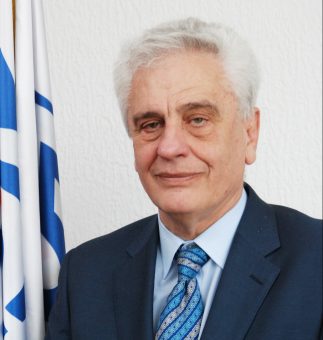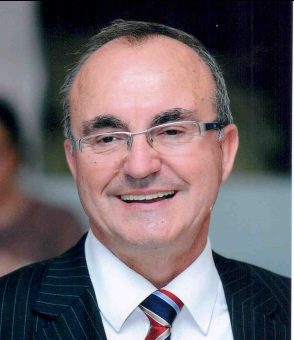The increase of energy production from renewable sources and higher energy efficiency are definitely directions towards a sustainable energy future of Serbia. Energy experts have no dilemmas about that. However, the subject that makes them differ, including our interlocutors, is what to do with coal reserves: whether to invest in the exploitation of coal in an environmentally friendly way or to start with the decarbonisation of the electricity system now and turn exclusively towards clean energy
The record air pollution in cities across Serbia this winter has raised the question of how much coal-fired power plants with their emission of harmful substances are affecting the air and our health and what to do in a situation where coal is still the dominant source of energy in our country and judging by the reserves, we can continue to exploit it for at least half a century. Is the economic viability of coal a justifiable reason to base the electricity system on it in the near future, is coal at all the cheapest source of energy, how much we are able to use coal in an environmentally friendly way, or it is already wiser to move to the decarbonisation process and invest as much as possible in renewable energy sources – we asked the opinion of two eminent experts in this field, Branko Kovacevic, PhD, President of EPS Supervisory Board, formerly Professor and Dean of the School of Electrical Engineering in Belgrade and Rector of Belgrade University, and Nikola Rajakovic, PhD, Professor at the Department of Power Systems at the Faculty of Electrical Engineering in Belgrade, who chaired the EPS Steering Committee from 2002 to 2004, and also was the Secretary of State at the Ministry of Mining and Energy from 2008 to 2011.
EP: EU member states are planning to close all coal-fired power plants by 2031, while in our country the new ones are still being built led with an argument that electricity production in this way is three times cheaper than energy generated from solar power plants or wind farms. What was taken into account in that calculation and what was omitted?

Branko Kovacevic: EU member states indeed have long term plans to stop using coal for electricity production by mid-century, but 2031 is not the deadline. Coal will undoubtedly be a significant source of energy in the for the next 15 years. I am not familiar with the details and the input of the calculation you mention with regards to the price/cost ratio of energy obtained from coal and renewable energy sources (RES). However, it is certainly a fact that RES are more expensive for exploitation. Coal is less expensive, while water is still cheaper than coal. Electric Power of Serbia obtains one-third of its energy from hydropower plants and has invested many resources in their revitalisation and modernisation to increase these capacities and extend their working life.
Nikola Rajakovic: The cost of electricity produced by the coal power plants nowdays must include the cost of environmental protection (i.e. the cost of health care), as well as the cost of the entire life cycle of the thermal power plants, which are partly related to the expense of closing down the mines with surface exploitation, the rehabilitation of thermal power plant locations, ash dumps… With such calculation, kWh produced in lignite-fired thermal power plants becomes noticeably more expensive than kWh produced by the solar power plants. The question is why we favour thermal power plants. Thermal power plants were built in the 1970s when carbon dioxide emissions were not even taken into consideration. The concern about nitrogen oxide and desulphurisation seriously started to arise in our country only in this century! A key feature of the modern energy transition is a fast pace of changes. The resources that we need to rely on are the sun, wind, biomass, hydropower, geothermal energy, and above all our knowledge and technical ability to create through energy transition an energy system based on principles that contribute to environmental protection, but which is sufficiently reliable and cost-effective and surely predominantly based on domestic renewable resources.
EP: The fact is that Serbia has coal available for mining for the next 50 years, but it is also known that our thermal power plants do not meet European environmental standards. What is preventing us from using the coal more healthily and how will this gap between the resource that is available and the damage we are doing be reduced in the near future, given the enormous consequences of pollution on health?
Branko Kovacevic: In the 1990s, EU Member States began with significant investments in environmental protection, especially in the field of energy production. At that time, Serbia was going through a severe economic and political period. And while electric filters were being installed on thermal power plants throughout Europe, we fought for every kilogram of coal and kilowatt-hour of electricity to keep the light bulbs on. In recent years, we have been rapidly catching up with Europe. The task that EPS has ahead of themselves is difficult, but we have experts who are ready to deal with them competently. By 2019, EPS invested by far the most in environmental protection in Serbia – 500 million euros. Ninety-seven million euros has been invested in the reconstruction or replacement of the existing electric filters on the power plant units. In the reconstruction of burners by which nitrogen oxide emissions are being reduced, 69 million euros have been invested. In the flue gas desulphurisation on blocks – 193 million euros.
Regarding the use of coal in an environmentally acceptable manner, there has been an investment in the most modern system for coal quality management in the Mining Basin Kolubara. The whole project is worth 181 million euros. EPS is planning further environmental investments worth more than one billion euros in a series of projects that involve the protection of air, water and soil and improvement of environmental quality. In the coming years, investments from EPS will reduce the sulfur dioxide emissions by 90 per cent, nitrogen oxides by 45 per cent and particulate matter by 95 per cent.

Nikola Rajakovic: In Kolubara and Kostolica basins, there will likely be lignite for the next 50 years with this intensity of exploitation, but it is a crucial energy fact that we consume it with very low efficiency. Roughly speaking, only about 30 per cent of the available energy from coal is converted to electricity in our thermal power plants. I am confident that our generation does not have the mandate to consume all coal in such an inefficient way. Therefore, I advocate that future generations should be left with enough coal which they will know how to exploit more efficiently. The use of coal in a healthier way is costly, and the transition to clean technologies in thermo-energetics with carbon dioxide storage is prolonged and uncertain. The gap between the available resource and the damage we are doing is impossible to bridge by shutting down all thermal power plants overnight. But an exit strategy must exist and must be started with the closure of all the old thermal units, therefore, with the gradual abandonment of thermal energy based on lignite and switching to renewable sources (primarily solar and wind power plants). The plans for innovation of Kolubara B is absolutely inappropriate for the times we live in!
EP: The example of Kostolac B TPP, which has relatively modern technology for limiting sulfur dioxide emissions, is often cited but is seemingly not used because of the cost of the use of this technology. On January 15, this year, the Energy Community Secretariat initiated a lawsuit against the Republic of Serbia for exceeding the prescribed emissions of pollutants from thermal power plants. How much will we be forced to align with the European standards if not for ourselves, then for the impact on pollution across Europe?
Branko Kovacevic: The flue gas desulphurisation system for the Kostolac B Thermal Power Plant was completed in 2017, and through warranty measurements, it has been proven that its operating parameters are in full compliance with the agreed and below the current European standard of 200 milligrams per cubic meter. Final adjustments to the EIA study are in process. I expect that the operating permit will be obtained during 2020 and that the plant will enterinto continuous operation. When it comes to the lawsuit, the Energy Community itself is aware that non-EU countries after decades of crises and wars, cannot implement the Large Firebox Directive overnight, as is the case with the EU members. That is why the Energy Community has accepted that the National Emission Reduction Plan -NERP – should be applied instead in countries such as ours. The Government of Serbia adopted this document on January 30, 2020, but EPS has begun to implement NERP’s regulations as of January 1, 2018. In addition to the desulfurization system constructed in Kostolac B TPP worth 96 million Euros, a flue gas desulphurization system worth 217 million euro is being built for the four TENT A units. There are plans for the projects for the remaining two blocks in the TENT A, as well as the blocks in TENT B, TPP Kostolac A and a new Kostolac B3 block whose construction is ongoing. EPS’ total investment in flue gas desulphurisation systems, for the constructed and planned facilities, amounts to approximately 595 million euros. EPS is also planning both primary and secondary measures to reduce nitrogen oxide emissions from thermal power plants. In doing so, EPS meets strict EU environmental standards.
Nikola Rajakovic: The alignment with the European standards is beyond question. Nevertheless, I think it is illogical that someone from Europe cares more about us than we do ourselves. I would also like here to point out the relationship between the developed industrial world and the countries in development (where we stand) and related to this a lack of logic in the fight against climate change. That is, cumulatively speaking, if the contributions of developed countries to global warming are much higher, then viewed as a whole, developing countries almost have the moral right to meet their emission quotas. On the other hand, the awareness that the planet is endangered does not give enough leeway to developing countries to meet their emission quotas.
In focus:

EP: Even though we mostly use coal to produce electricity, we continually hear that the future of energy for Serbia, as it is in the EU, is in renewable energy sources. Where do you see it – in wind farms, biogas power plants or some other energy mix or a different approach?
Branko Kovacevic: There is a significant potential for improvement of energy efficiency in all segments of consumption in Serbia. We talk a lot about how and from what sources we produce electricity but until we change our bad habits in the consumption of that energy – the future doesn’t look well. How serious this issue is, shows us the example of Germany which has allotted 17 billion euros to improve energy efficiency, primarily through better insulation in buildings, the purchase of more efficient electric motors, pumps, ventilators, increased investment in energy-saving systems, etc. Significant resources need to be invested in energy efficiency and, of course, renewable energy sources, to be able to create the best and most efficient energy mix. For such systems to be sustainable, it is necessary to work on connecting regional markets, as this not only guarantees stability but also reduces the costs.
Nikola Rajakovic: The future of modern energetics stands in a complex energy mix in which renewables are dominant, in energy efficiency, in the integration of the electricity sector with the transportation, heating and industry sectors, in demonopolisation of sectors, in the active role of customers, inthe market development and above all in the introduction of smart technology networks without which all of the above would not be possible to put into effect. The best references in the field of energy can be seen in the energy mix from the end of this century – up to two-thirds of the energy from solar power plants, and the rest mainly from wind farms and hydropower plants. However, we should not ignore any form of renewable sources. The technologies for converting surplus electricity into heat and liquid hydrogen are especially emerging as the essential energy sources in transportation where fossil fuels are no longer in use.
Prepared by: Tamara Zjacic
Read the whole Interview in the new issue of the Energy portal Magazine NATURAL RESOURCES, march – may, 2020



